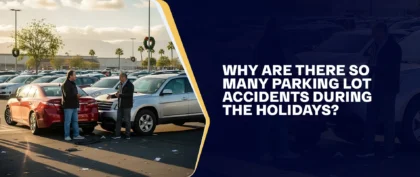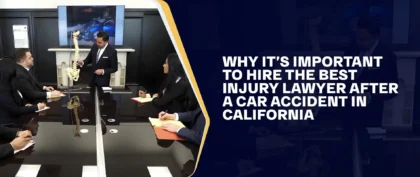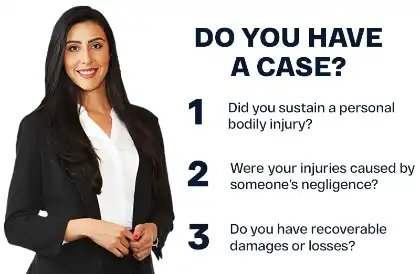Table of Contents
Not-So-Fun Fact: Rain is the Most Dangerous Weather Condition to Drive In
Fire season here in California is typically devastating to local wildlife and residents. In fact, the California Department of Insurance reports that losses from the November 2018 wildfires were over $12 billion. The 2019 wildfire season resulted in considerable damage, with heavy evacuations and extended fire activity adding to the year’s insurance claims.
Here in California, we welcome the rain — especially during wildfire season. But it is important for drivers to use caution when driving in wet and rainy conditions — particularly when driving in the rain at night. Some California drivers lack experience driving in inclement weather, and accidents tend to increase in these instances.
If you have been injured by another driver in a rainstorm, you may have the right to seek compensation. The experienced car accident lawyers at Arash Law have helped many California car crash victims pursue compensation for their losses. Call (888) 488-1391 to schedule your free initial consultation. Consulting with an attorney allows you to understand your rights and available legal options.
Why It Is More Dangerous To Drive In The Rain: How Much Does Rain Impact Road Safety?
According to the United States Department of Transportation, there are many ways in which precipitation can make driving more dangerous. It affects safety by reducing drivers’ visibility, reducing friction with the roadway surface, and obstructing lanes of traffic. Precipitation also affects traffic flow by reducing the capacity of a roadway (especially in areas of flooding), forcing drivers to reduce their travel speed, delaying travel times, and increasing the overall risk of accidents to each road user. All in all, these factors make driving on wet roads much more dangerous.
One dangerous aspect of driving in the rain is the behavior of other motorists. Many drivers here in sunny California are not used to driving in the rain. They may not be prepared to slow down or use their headlights to be sure they are visible to other drivers. They may slow down too much and cause a traffic obstruction. These behaviors can all be dangerous to everyone else on the road. Worse still are the drivers who know what to do, but simply choose not to do it. Many drivers are in a hurry to get through heavy California traffic. The choice to speed in the rain can have fatal consequences.
Slow Down When Driving In The Rain
Slowing down is one of the important things a driver can do to stay safe on wet roads. According to the Federal Motor Carrier Safety Administration, driving too fast for conditions is defined as traveling at a speed that is greater than a reasonable standard for safe driving. California, like other states, has integrated this rule into its statutes.
Section 22350 of the Vehicle Code prohibits driving at a speed greater than is reasonable or prudent, having due regard for weather, visibility, the traffic on, and the surface and width of, the highway, and in no event at a speed which endangers the safety of persons or property. This means you can get a speeding ticket even when driving at the posted speed limit if rain or wet conditions make the roads unsafe. Failing to slow down in these conditions can lead to speeding-related accidents with serious consequences.
So how slow should you go? The FMCSA recommends that drivers reduce their speed by a third on wet roads and by half on snowy roads. Every situation will be different. What speed is “safe” will depend on how wet the roads are, how much traffic there is, how dark it is outside, and similar considerations. Prioritize safety by being cautious. If other drivers are impatient to get around you, stay in the right lane and let them pass.
12 Safety Tips For Driving In The Rain
When drivers don’t follow safety protocols, they may be legally accountable for resulting harm. Safe driving habits can save lives. They may also help reduce accident rates, potentially contributing to lower insurance premiums. Remember that even light rain can increase your risk of injury on the roads.
For all these reasons, it is important to follow these driving in the rain safety tips:
1. Be Especially Careful When Rain Follows Hot, Dry Spells.
Engine oil and grease can build up on roads and highways over time. If it hasn’t rained in a while, the buildup can reduce friction on the roadway and make it more difficult to control your vehicle. The first rain after a dry spell usually washes up many different types of debris. Be especially careful when driving after a long, dry spell.
2. Avoid Standing Water On Roadways.
Puddles can cause drivers to hydroplane and lose control of their vehicles. They also impair your vision and other drivers’ visibility. Moreover, standing water often shields potholes and debris from view, preventing you from responding to these hazards. Puddles can also reduce the effectiveness of your vehicle’s brakes. Avoid puddles whenever you can safely do so.
3. Drive In The Tracks Of The Car In Front Of You.
This allows the vehicle ahead to displace any standing water that’s on the road.
4. Increase Your Following Distance.
Slick roads, wet brakes, and reduced visibility can lead to collisions. Give other vehicles plenty of room and brake early with reduced force.
5. If Your Car Begins To Hydroplane, Do Not Brake Or Turn The Wheel Abruptly.
This may cause your vehicle to go into a skid or spin. Take your foot off the gas and keep the wheel straight until your car reclaims traction. Brake gently if needed.
6. Grip The Steering Wheel With Both Hands To Maintain Vehicle Control.
Distracted driving is a major public health risk across the country. It is especially important not to be distracted while driving in the rain, as there are more hazards to be aware of and respond to. You will also need greater physical control over your vehicle in order to overcome the reduced friction on the wet roadways. Keep both hands on the wheel and put everything else away to avoid situations that could lead to distracted driving accidents during poor weather conditions.
7. Plan For More Time On The Road
When it’s raining — even a little — traffic tends to move more slowly. Though it may slow you down on your commute to school or work, this is a good thing. Everyone will be safer at lower speeds. Give yourself plenty of time to get to your destination. Allow extra travel time so that you are never in a rush when you are driving in the rain.
8. Be More Cautious With Braking
When you’re driving in a downpour, you simply cannot brake the same way you would in ideal weather conditions. The roads are slippery, which means you could slide more if you brake too quickly. Heavy rain can also allow water to enter your brakes, potentially causing brake failures and reducing your vehicle’s stopping power.
When it’s raining, gently use your brakes. Be sure to keep plenty of distance between you and the car in front of you to avoid any of these situations. A following distance of three seconds is appropriate for sunny conditions. In rain or other inclement weather, increase this to four or more seconds as conditions require. This can be measured by timing when the vehicle ahead of you crosses a fixed point. Time how much longer it takes you to cross that same point, and you have your following distance.
If brake failures or wet-road collisions lead to injuries, consulting experienced auto accident lawyers can help you understand your legal options and protect your rights in the event of a crash.
9. Use Your Headlights
Even if it’s only lightly sprinkling, your headlights will help you see the road better. Plus, having your headlights on allows other drivers to see you. Refrain from using high beams under normal rainy conditions. The added light reflects off the water in the air and on the ground, which can actually impair visibility for both you and other drivers. Save your high beams for fog and other conditions of extremely limited visibility.
10. Do Not Use Cruise Control
Using cruise control in the rain can cause many different problems for drivers contending with the rain. If you begin to hydroplane while you have your cruise control set, your car can actually accelerate. This makes it more difficult to pull out of a hydroplane. More importantly, cruise control takes the driver’s feet away from the gas and brake. Many safety professionals recommend covering the brake in the rain and being ready to stop quickly if the situation requires it. Car safety technology should not be your only line of defense in these conditions.
11. Enter A Curve Slowly
Speed limits posted on curve warning signs are not typically intended for rainy conditions. Remember, you have less control of your vehicle on a curve, and this is exacerbated when driving on wet roads. Slow down even further when going into a curve on a wet road. Large trucks and SUVs have a high center of gravity, which creates a higher risk of rolling over. Be even more cautious if you are taking a curve in the rain while driving a truck or SUV.
12. Stay Off The Road If Possible
One way to avoid a weather-related car accident is to stay at home when there’s a rainstorm. Obviously, this isn’t always possible. School, work, and other obligations will not wait for the storm to pass. But any optional trips should be delayed until the roads dry up and traffic clears.
Mechanical Problems In Cars That Can Be Caused By Rain
All drivers have a legal obligation to drive with reasonable care. In addition to human error, rain and water can cause mechanical damage to your vehicle. Here are some problems to be aware of when driving in wet conditions:
- Window Fog — When it is raining, the windshield and other windows can fog up quickly. This can obscure a driver’s vision — sometimes without warning. Window defoggers can eliminate the problem. Many rear windshield defoggers consist of wires that run across the glass. When the defogger is activated, these wires heat up to clear the fog from the glass. The vast majority of cars sold currently have air conditioning. This, too, is an effective system for removing moisture from the air, and it can help defog your windows when driving.
- Balding and Improperly Inflated Tires — Over time, tires lose their tread. This process is known as balding. Tires will all wear down over time, although reckless driving and alignment problems can speed up the process. The tire tread is what allows the tire to grip the road and shed water on a wet road. A vehicle that lacks adequate tire tread has a greater risk of hydroplaning on wet surfaces. Tires should have a tread of at least 1/16 of an inch. A trick to see if the tire in question has enough tread is to stick a Lincoln penny into the tire tread, with Lincoln’s head pressed into the groove. If the top of Lincoln’s head is visible, it means there is not enough tread. Tires that are not properly inflated are also a driving hazard that is magnified in wet road conditions. It is important to check your tires regularly and confirm that they can withstand conditions of low friction (such as rain).
- Water Buildup on Brakes — After driving through a puddle, brake rotors can become coated with water. This affects their ability to slow the car safely. In order to prevent this from happening, the driver should lightly tap the brakes after each puddle. This removes the excess water and reduces the risk of a brake malfunction. Excessive water from puddles can also damage your electrical system, so it is important to avoid driving through puddles whenever you can safely do so.
- Windshield Wipers — Windshield wipers are one of the important pieces of safety equipment for safe driving in the rain. They can dramatically impact a driver’s visibility, thus reducing the risk of an accident. Older wipers tend to become cracked and brittle after long periods of use. In areas with frequent rain, this might be as little as six months to a year. Even when they do not get much use, windshield wiper blades do not last forever. They can become brittle and warped by the sun, rendering them useless when driving in heavy rain. There are several indicators that the wipers need to be replaced, including windshield streaking, windshield smearing, rubber that flakes off when touched, wiper screeching, and frayed wipers. It is important to check your wiper blades before you get stuck in wet driving conditions. The worst time to discover your blades need to be replaced is when they are needed for a specific scenario.
California Car Accident Lawyers
If you or a loved one has been injured in an auto accident, consider consulting with a car crash lawyer. Anything you say or do can affect your claim. A car accident attorney can help protect your legal right to pursue compensation. Call Arash Law at (888) 488-1391 or contact us online to schedule your free initial consultation.
Our California auto accident lawyers know how to establish the value of your losses. The law requires a negligent driver to compensate injury victims for their losses, which may include pain and suffering, medical bills, lost wages, and property damage. Our lawyers can advocate for your rights and help you seek compensation after an accident.





























